Southwest Michigan field crops update – September 12, 2024
The season is winding down as crops near harvest. Winter wheat planting and storage potato harvest started this past week.

Weather
Much of the past week remained cool with a temperature drop over the weekend, making it feel like fall has arrived. Little precipitation fell throughout the week, facilitating harvesting, planting and other fieldwork. Temperatures began to increase mid-week and will level off in the mid-80s, which will continue throughout the week and into next. The low temperatures will remain relatively stable hovering around 60 degrees Fahrenheit. The dry weather will continue, as no precipitation is forecast for the next week. This presents some opportunities to do fieldwork but also challenges regarding winter wheat and cover crop germination on dryland acres.
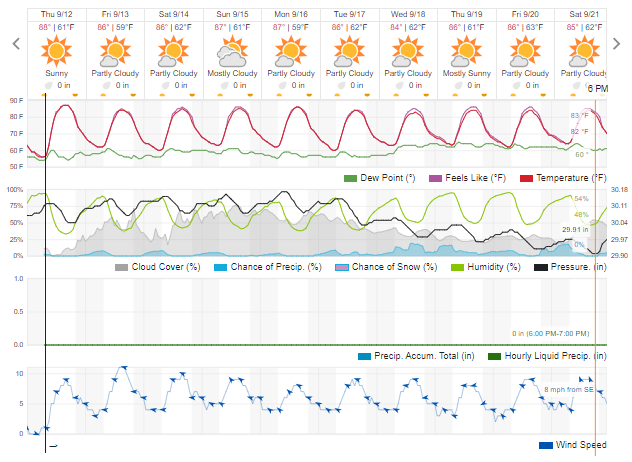
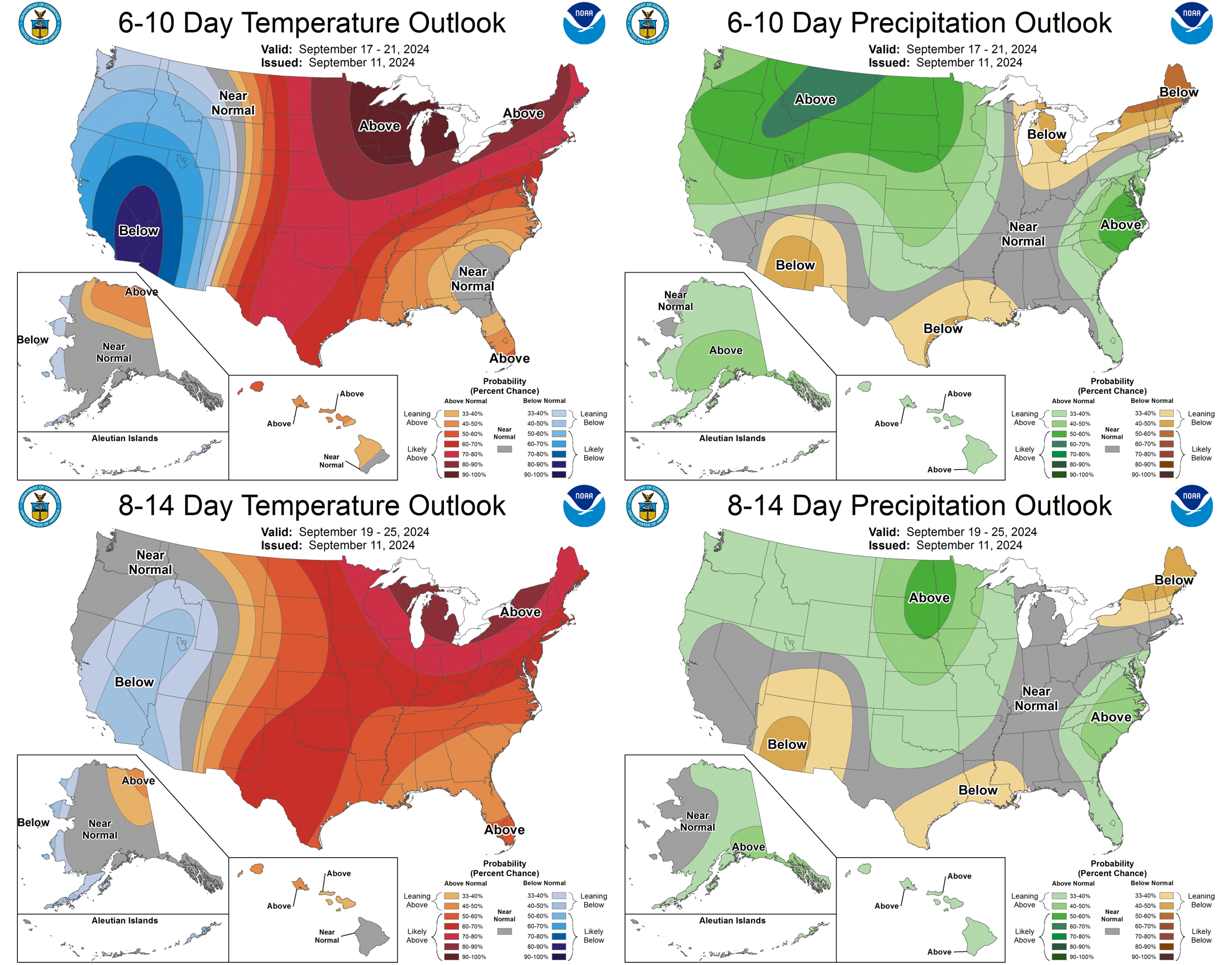
Crops and pests
Soybeans are mostly at R6 (seed fill) or have now reached R7 (beginning maturity). More acres reached R8 (full maturity) this past week. Many growers on irrigated acres ran their final irrigation of the season. As harvest nears, watch for lodging and green stem that could affect harvest timing and efficacy.
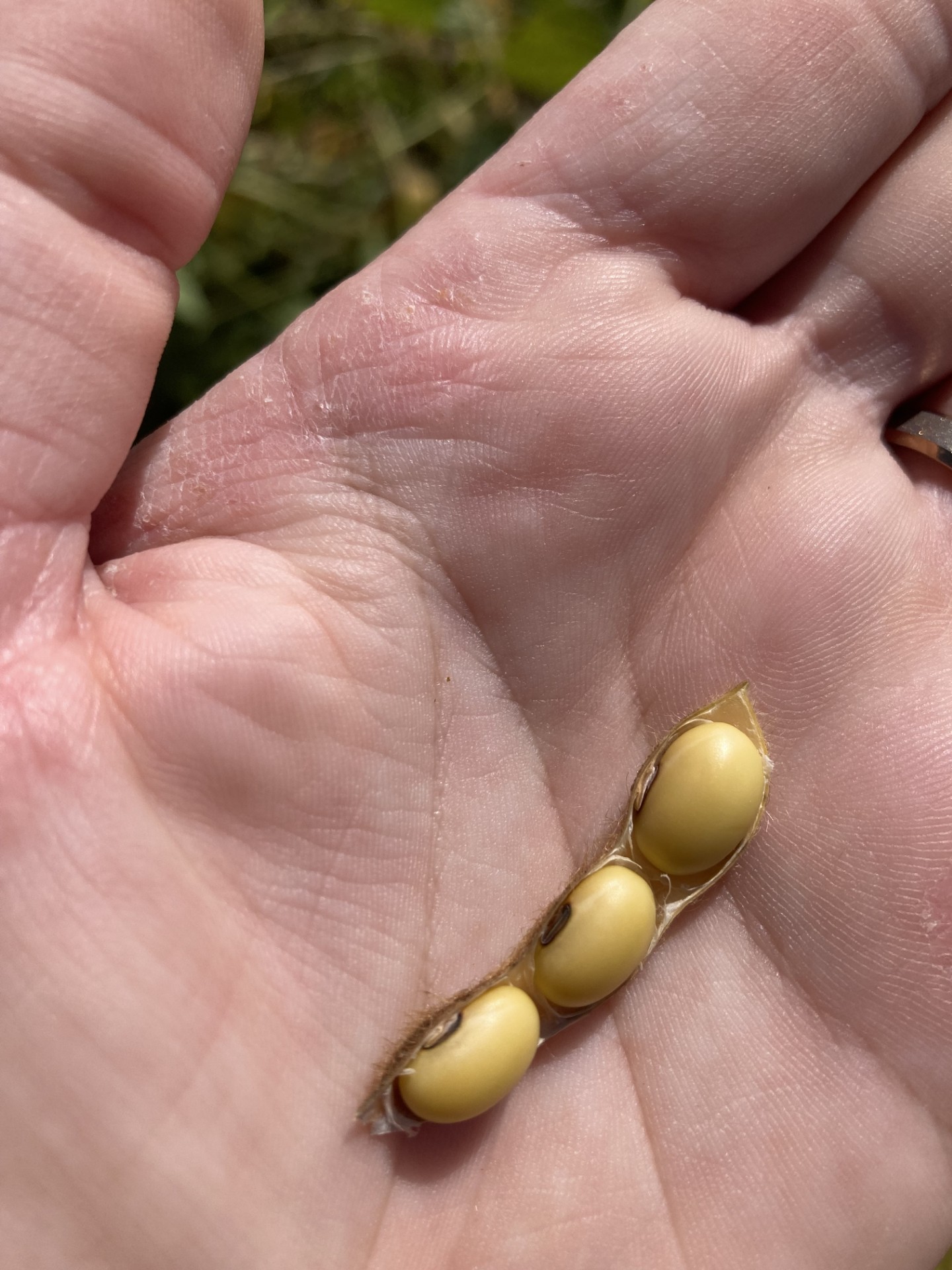
Silage and seed corn harvest continued. Most commercial corn is now at R5 (dent) and progressing to physiological maturity at R6 (black layer). As harvest nears, check for symptoms of stalk rot by pinching stalks between the lowest two internodes and pushing the stalk at eye level from vertical to a 30-degree angle. If 10% of stalks do not withstand the pinch or bounce back after the push, consider harvesting the area early to reduce future losses due to lodging and stalk breakage.
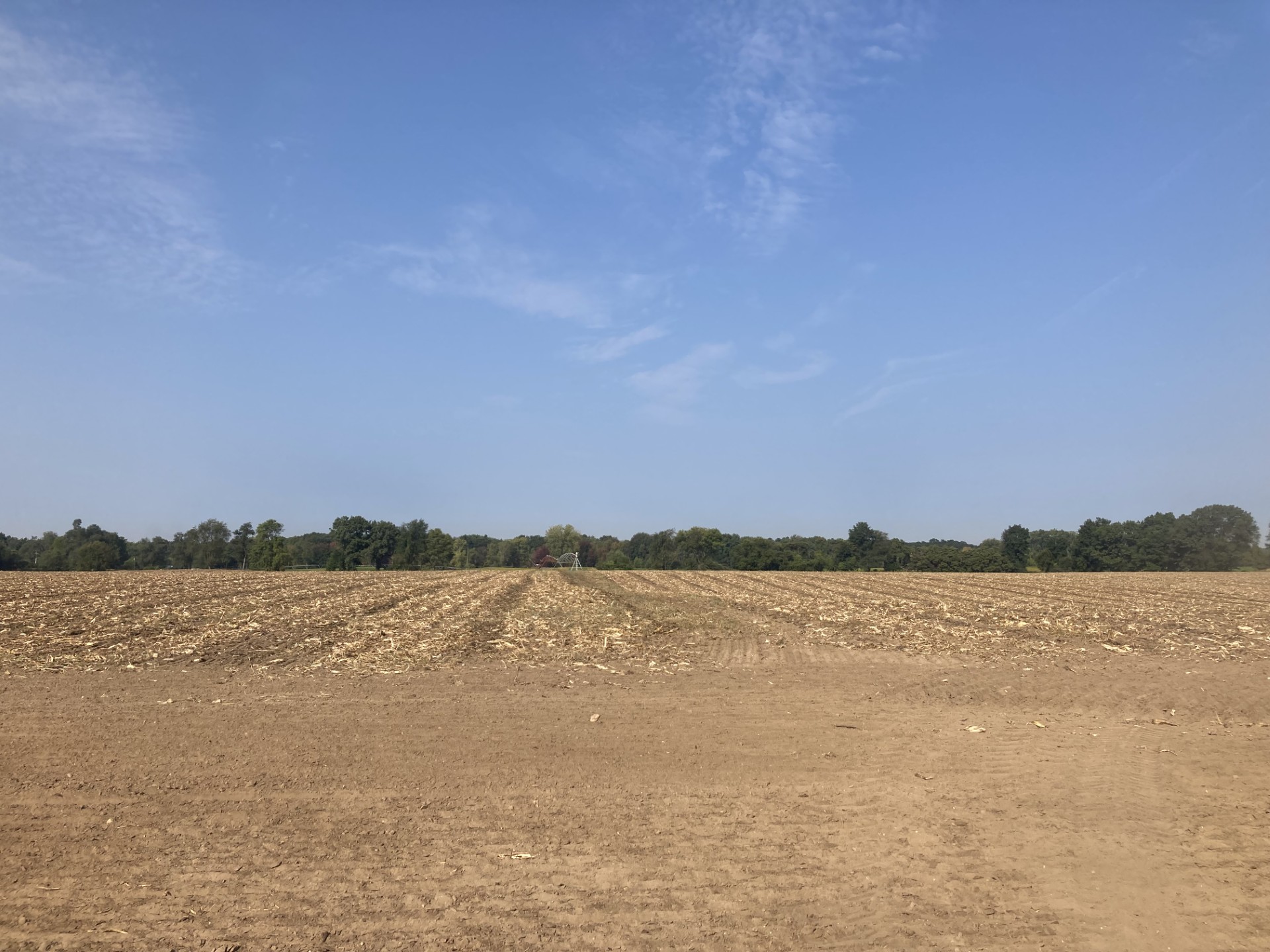
Winter wheat planting began in some areas. Timely planting is a key component to high-yielding wheat, as planting between now and early October will encourage more tillering than later planted wheat.
Potatoes for storage began to be harvested this past week. The cool temperatures and dry weather created good harvest conditions for potatoes entering storage. Although the recent dry weather allowed access into fields, harvest at low moisture levels will result in more bruising. It is best to keep moisture relatively even after vine kill until harvest. Irrigation five to seven days before harvest can soften soil clods and keep tubers hydrated.
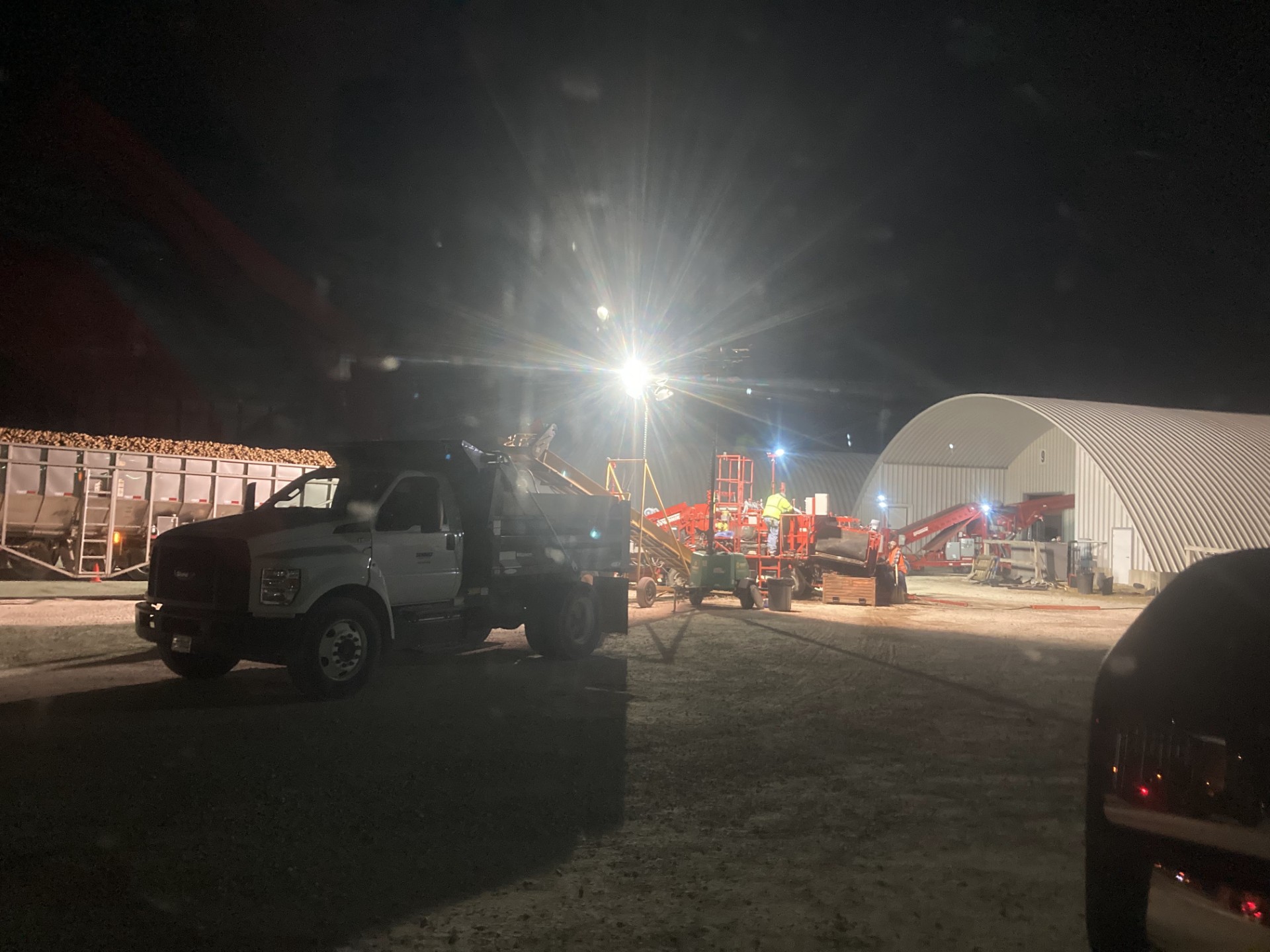
Cover crop planting was also underway in some seed corn, potato and early harvested acres.
Weekly water use
|
Estimated weekly crop water use for field crops in Michigan (in/week) |
|||||
|---|---|---|---|---|---|
|
Crop |
Growth stage |
Constantine |
Entrican |
Hart |
|
|
Corn |
Silk, Blister, Dough, Begin dent |
1.32 |
1.22 |
1.18 |
|
|
Full dent |
1.20 |
1.11 |
1.07 |
||
|
Black layer |
0.79 |
0.73 |
0.70 |
||
|
Full maturity |
0.13 |
0.12 |
0.12 |
||
|
Soybeans |
R3 and R4 Begin pod/Full pod |
1.32 |
1.22 |
1.18 |
|
|
R5 and R6 Begin seed/Full seed |
1.32 |
1.22 |
1.18 |
||
|
R7 Begin Mature |
1.20 |
1.11 |
1.07 |
||
|
R8 95% Pods Mature |
0.24 |
0.22 |
0.21 |
||
As we approach mid-September, most corn is nearing the black layer stage and soybeans are beginning maturity, which means it's time to consider your final irrigation based on your soil moisture levels. At these stages, crop water use decreases, and rainfall often provides enough moisture to carry the crop to maturity. However, allowing the soil profile to dry out may leave insufficient moisture for newly seeded cover crops to germinate. If the soil is dry, apply enough water—around 0.3 inches for sandy soils or 0.5 inches for loamy sands—to moisten the top 4-6 inches of the soil profile. In this article, we discuss irrigating cover crops for better emergence.
The table above presents estimated crop water use for various field crops across three locations in Michigan. This data helps irrigation management decisions by showcasing potential crop evapotranspiration, calculated based on reference evapotranspiration and crop coefficients for each crop growth stage. It is crucial to note that crop water use values vary across regions due to differences in weather conditions, growth stages, agronomic practices and soil properties.
When using these values for irrigation scheduling, be mindful that they assume all applied irrigation water will be utilized by the plants without any loss. Also, these values do not account for any precipitation during the calculation week. For more tools and information on irrigation scheduling tools, please refer to: Irrigation Scheduling Tools.
Reference evapotranspiration data was obtained from Enviroweather, which also offers a model for determining potential crop evapotranspiration. To access this tool, visit Enviroweather, click on "Crops," select your crop and use the potential evapotranspiration tool by choosing your nearest weather station, the latest date of interest and other crop information.
Field Crops Virtual Breakfast Series
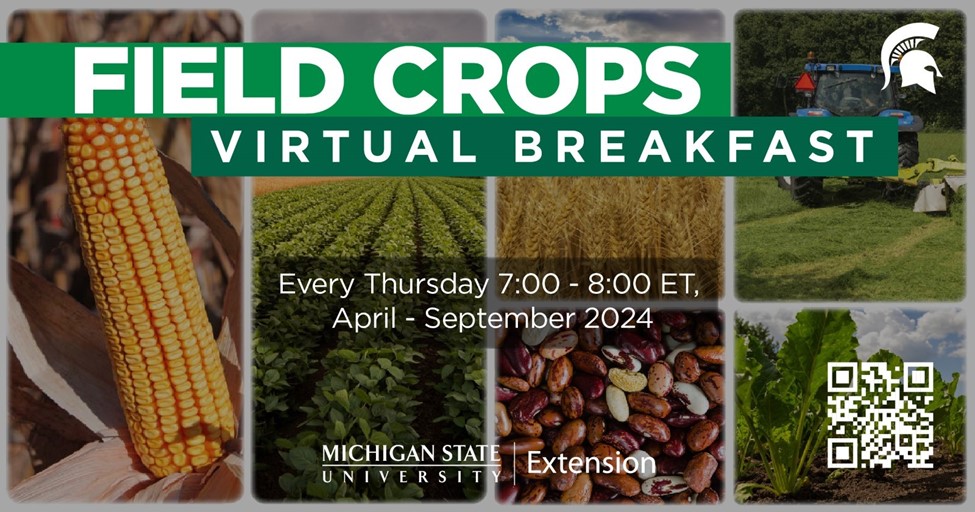
Grain marketing, presented by MSU agriculture economics specialist, Molly Sears, was the topic for the MSU Extension Field Crops Virtual Breakfast this week. Pricing outlooks for wheat, corn and soybeans and what those outlooks mean for Michigan farmers were discussed. Recordings of this and all the Virtual Breakfast meetings are closed-captioned and available at the Field Crops Virtual Breakfast webpage and the MSU Extension Field Crops Team social media platforms: Facebook, Spotify, YouTube, Apple Podcasts and Twitter.



 Print
Print Email
Email




